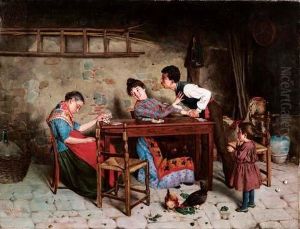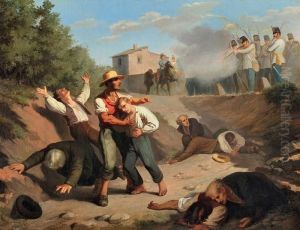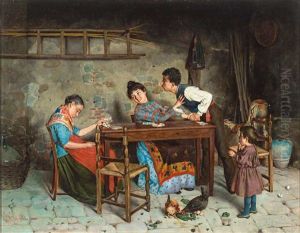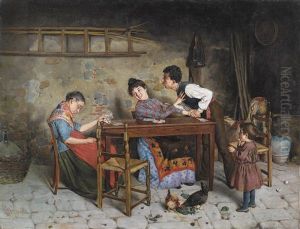Cosimo Conti Paintings
Cosimo Conti was an Italian artist known for his contributions to the art world during the late 19th and early 20th centuries. Born in 1855 in Italy, Conti immersed himself in the rich cultural and artistic heritage of his homeland from an early age. His education in art began in the traditional academies of Italy, where he was exposed to the Renaissance masters, whose influence would permeate his entire career. Despite the rise of modernist movements during his lifetime, Conti's work remained deeply rooted in the classical tradition, reflecting his reverence for the mastery of form, composition, and light that characterized the works of the old masters.
Throughout his career, Conti was known for his remarkable versatility, excelling in various mediums including painting, sculpture, and drawing. His subject matter was equally diverse, encompassing religious themes, portraits, landscapes, and historical scenes. Conti's religious works are particularly noted for their spiritual depth and the sense of serenity they convey, qualities that made them highly sought after by churches and private collectors alike. His portraits, on the other hand, are celebrated for their psychological insight and the skillful depiction of his subjects' character.
Conti's contributions to the art world were not limited to his creations. He was also an esteemed teacher, sharing his knowledge and passion for art with a generation of young artists. His teachings emphasized the importance of mastering classical techniques as a foundation for artistic expression, a philosophy that left a lasting impact on his students.
Despite his adherence to traditional styles, Conti's work did not escape the influence of contemporary movements. The latter part of his career saw him incorporating elements of Impressionism and Symbolism, demonstrating his ability to evolve and adapt his approach to painting. This blend of classical and modern elements helped to create a distinctive style that was uniquely his own.
Cosimo Conti passed away in 1928, leaving behind a legacy that has continued to influence the art world. His dedication to classical artistry, combined with his openness to new ideas, cemented his reputation as a bridge between the old and the new. Today, his works are preserved in museums and private collections around the world, standing as a testament to his lifelong commitment to beauty and excellence in art.



